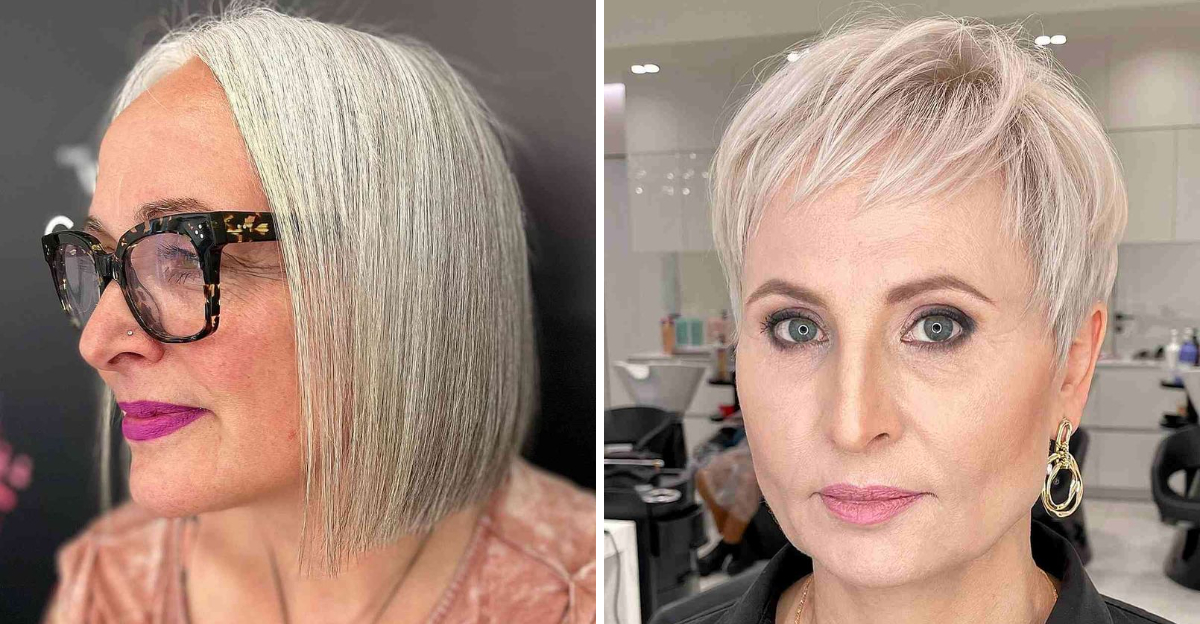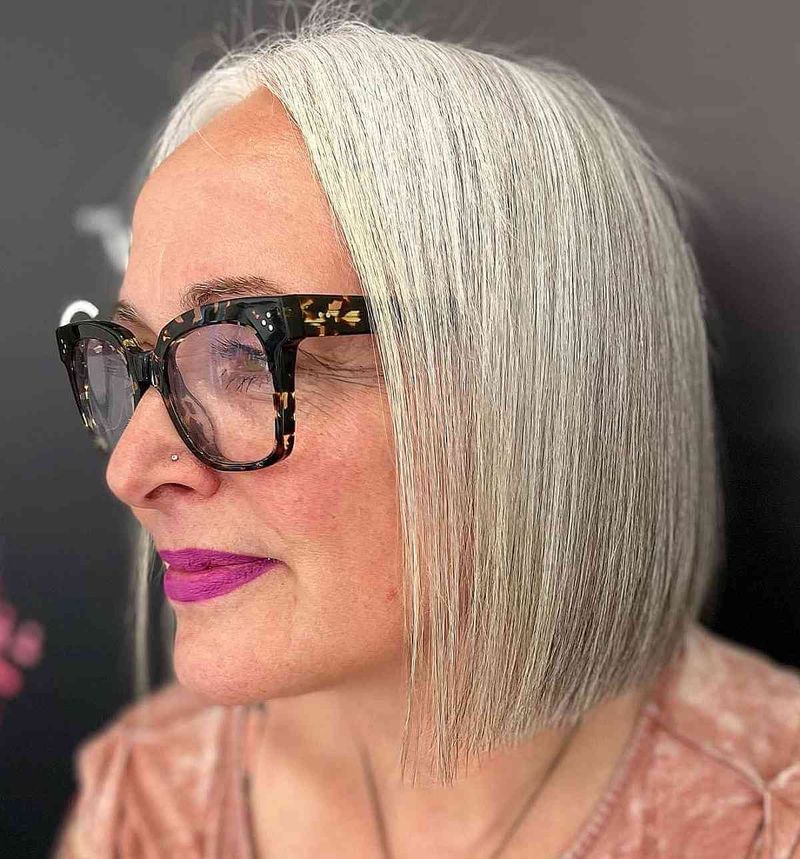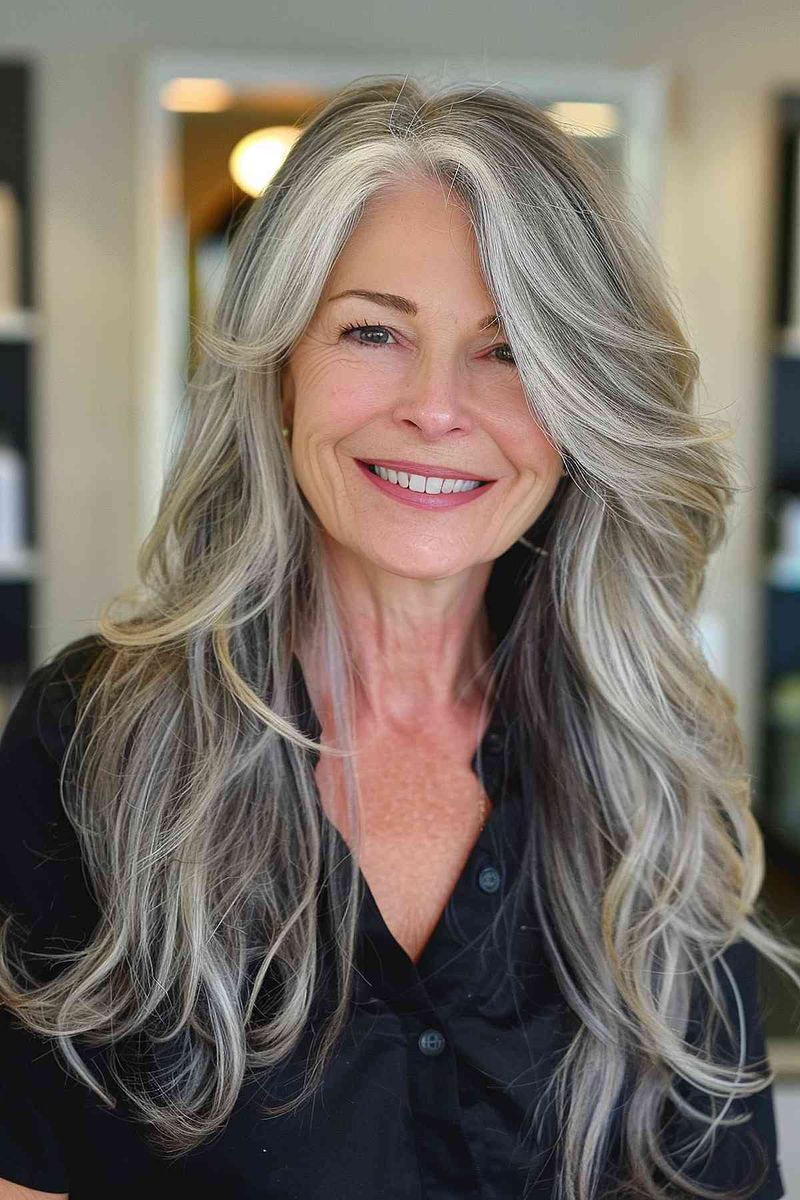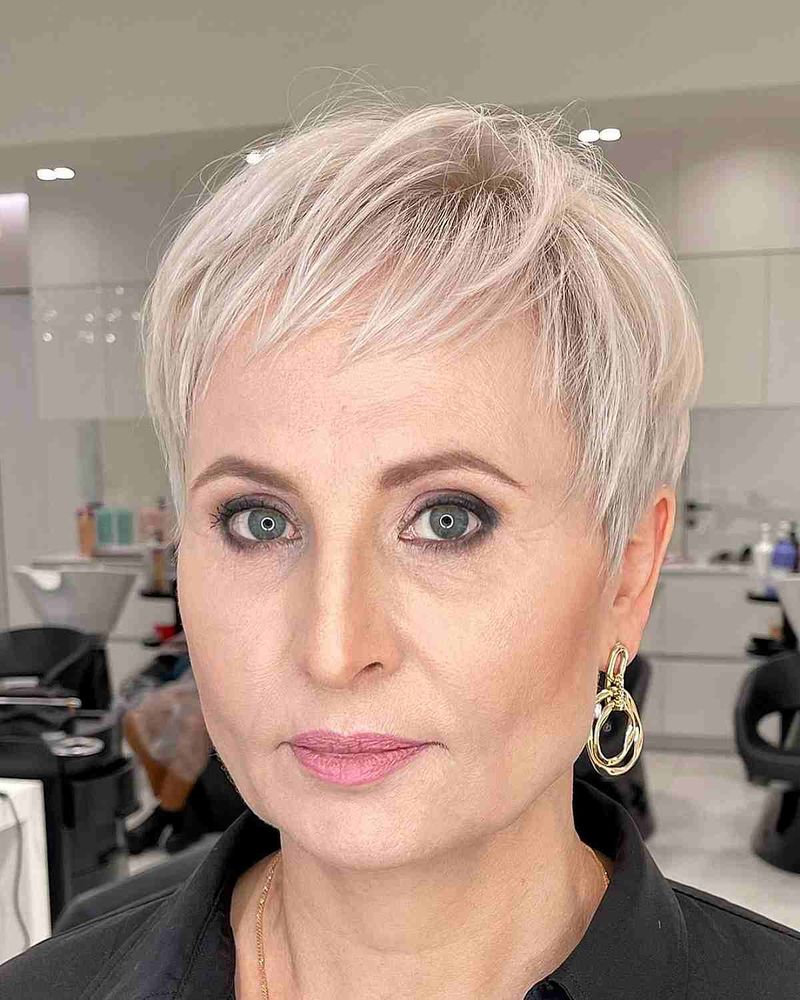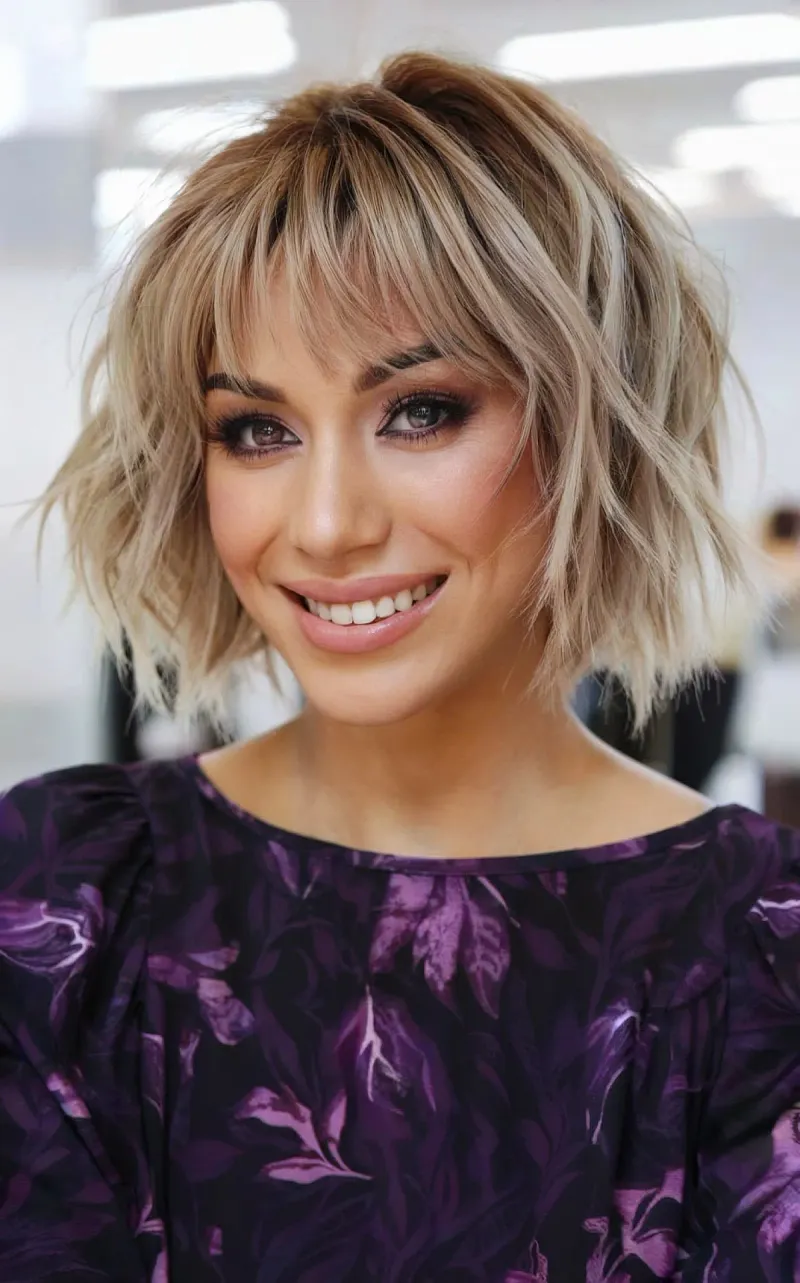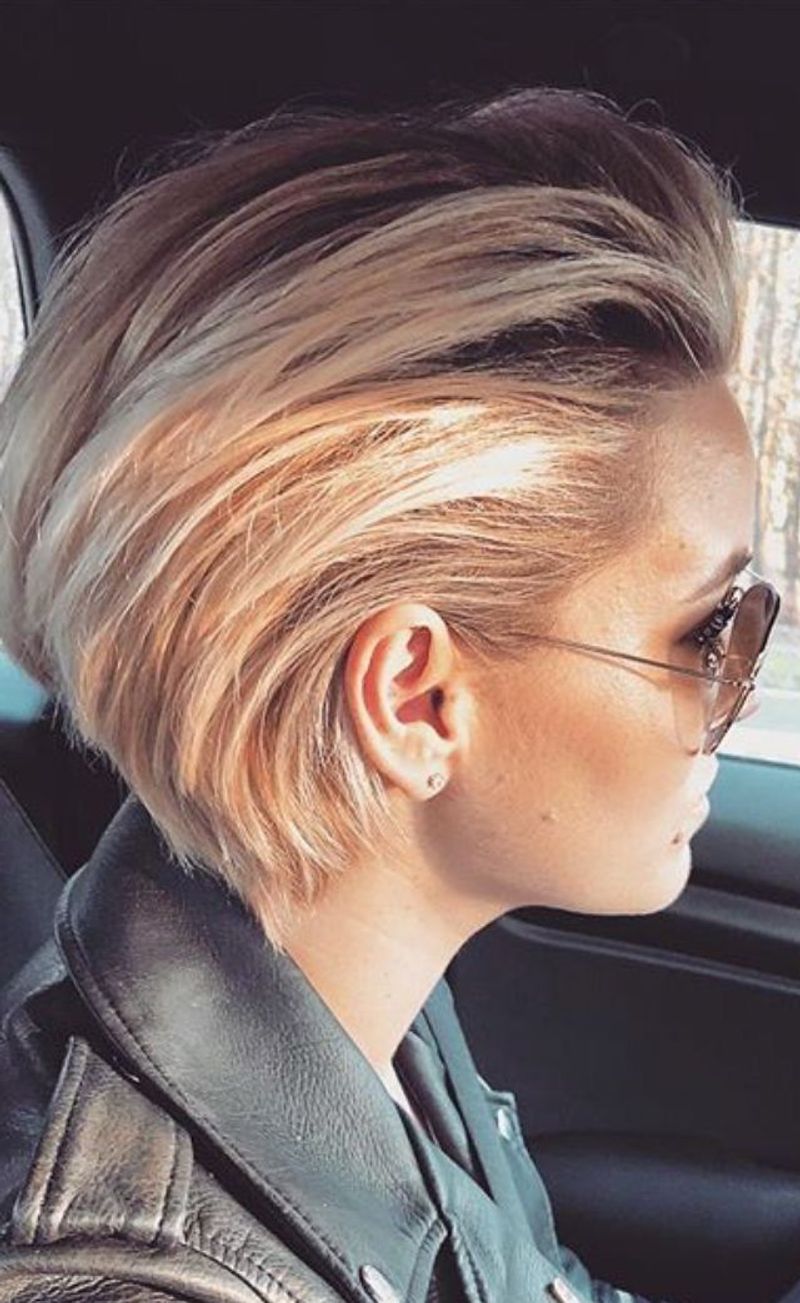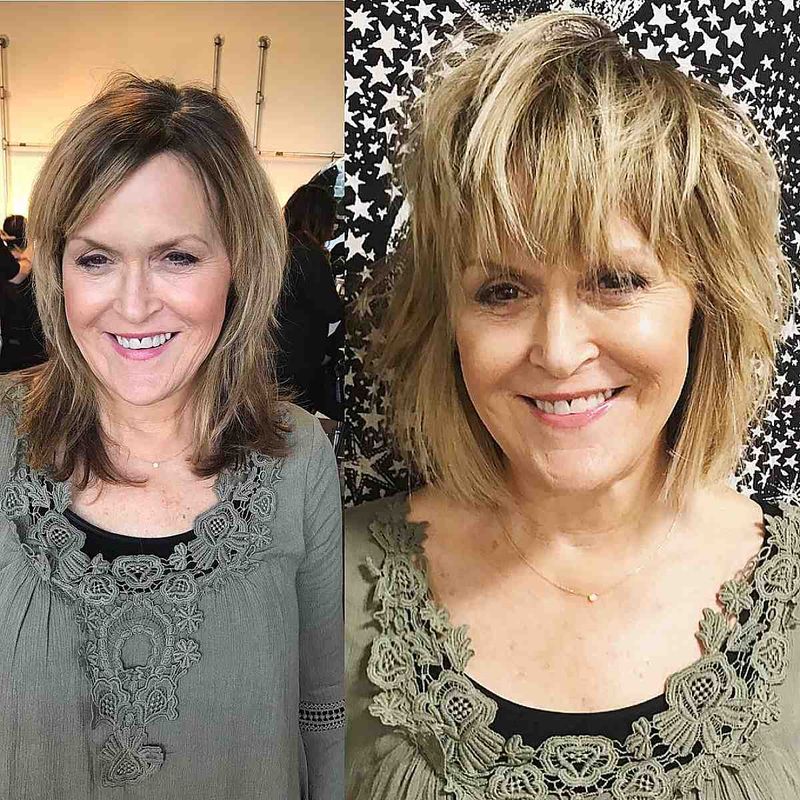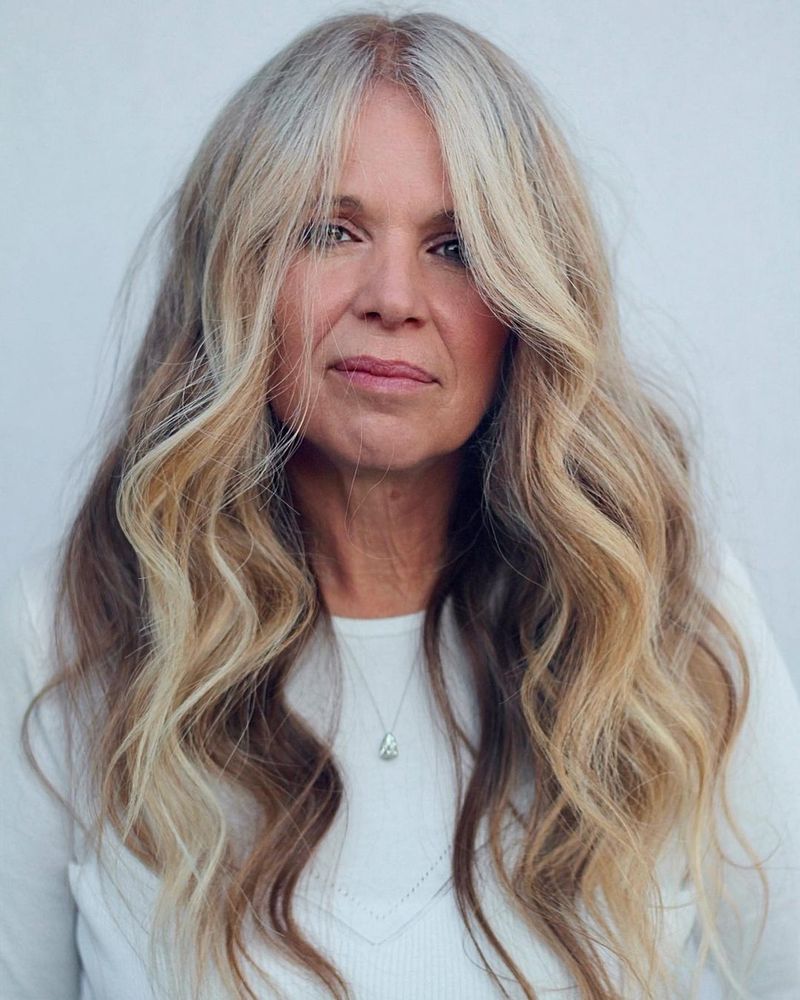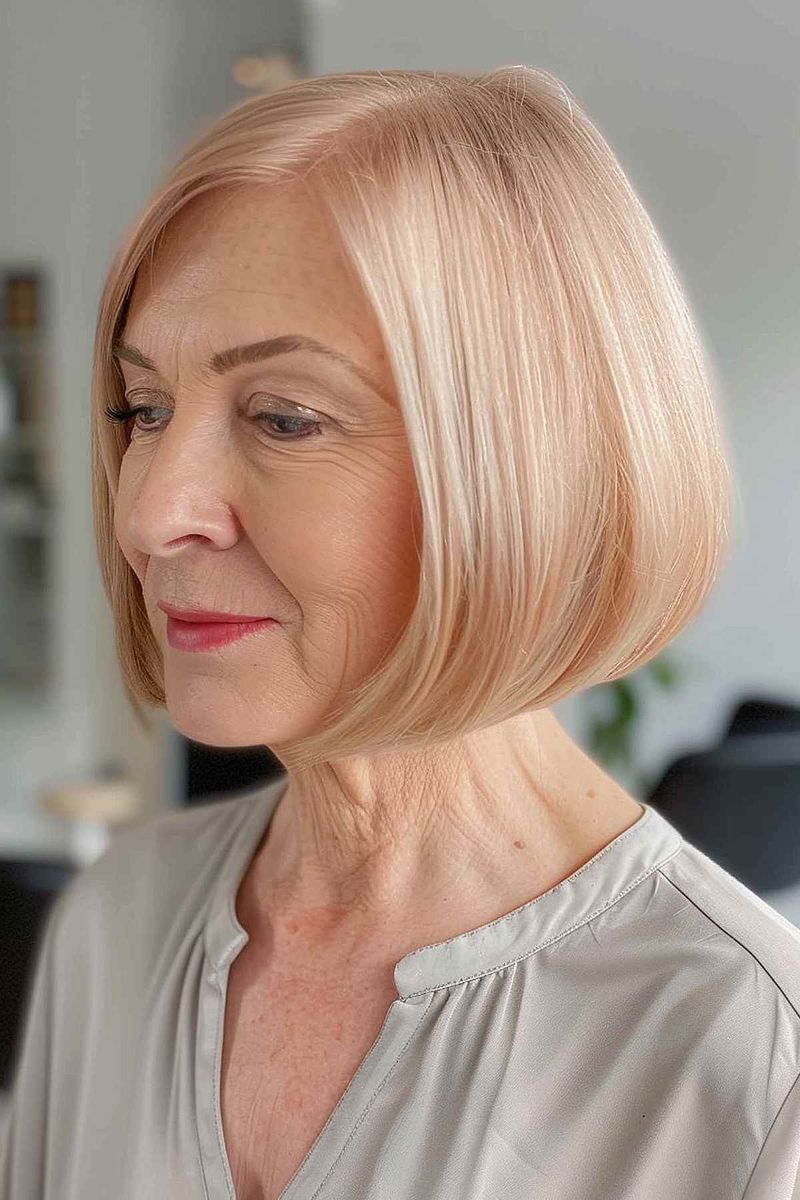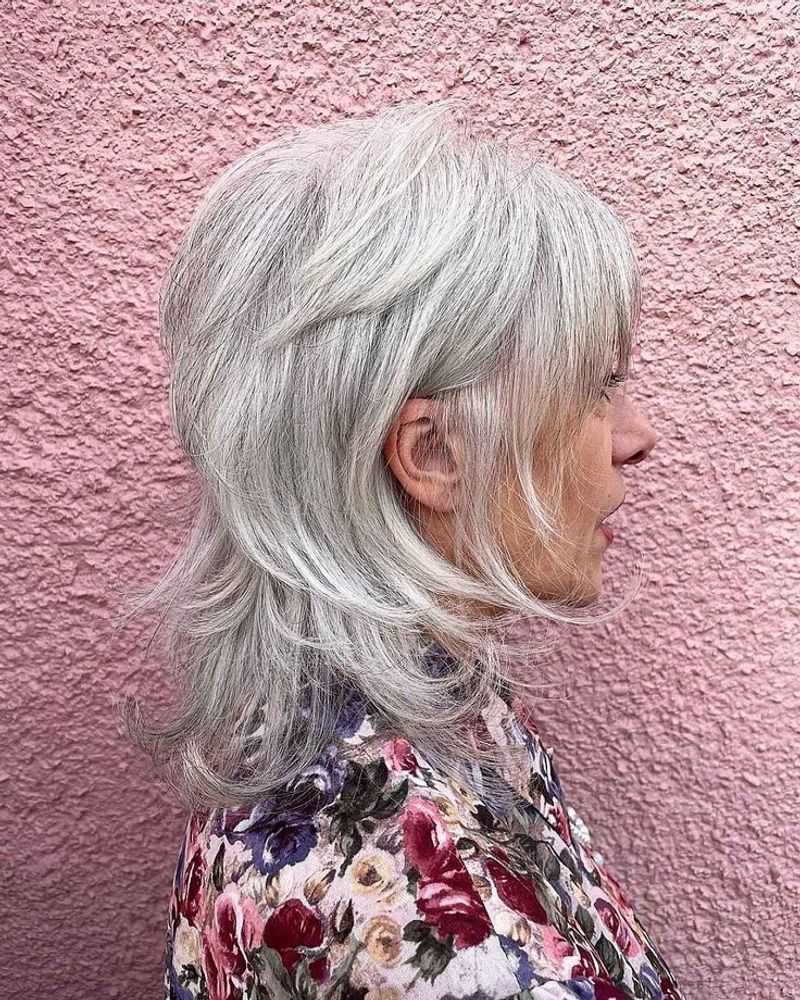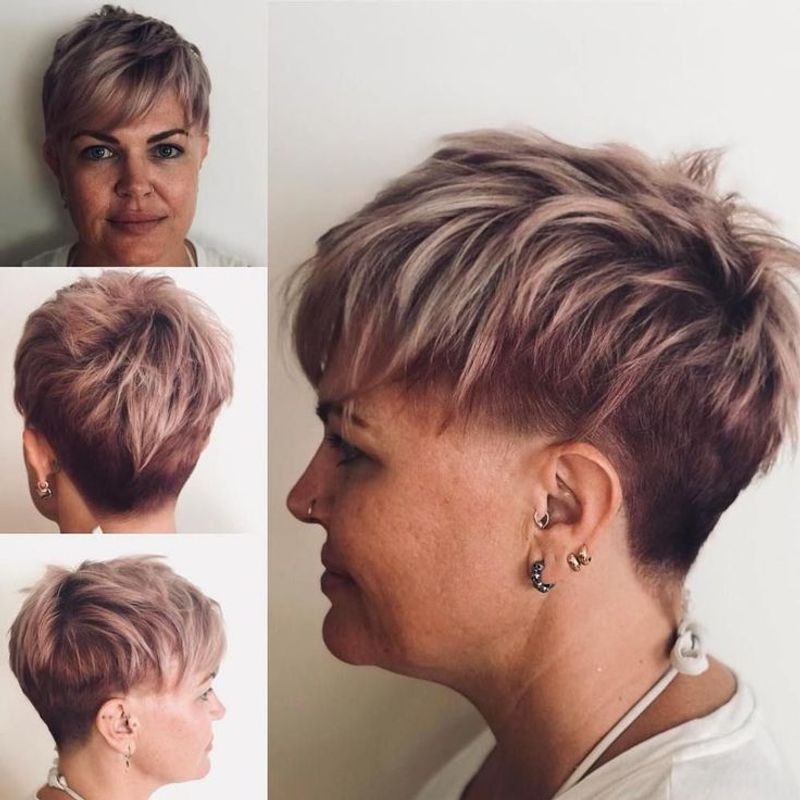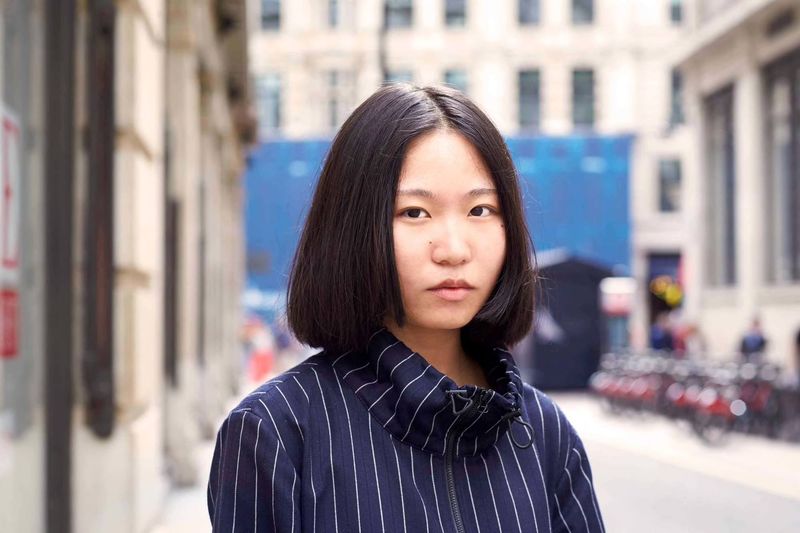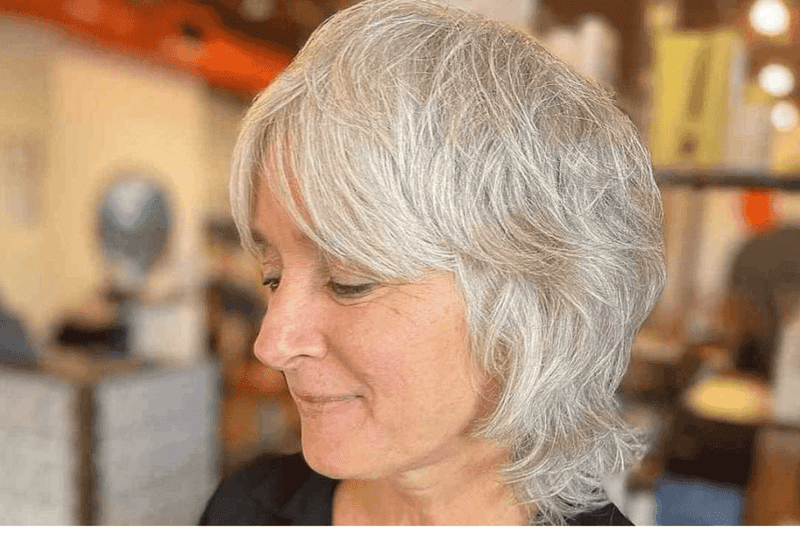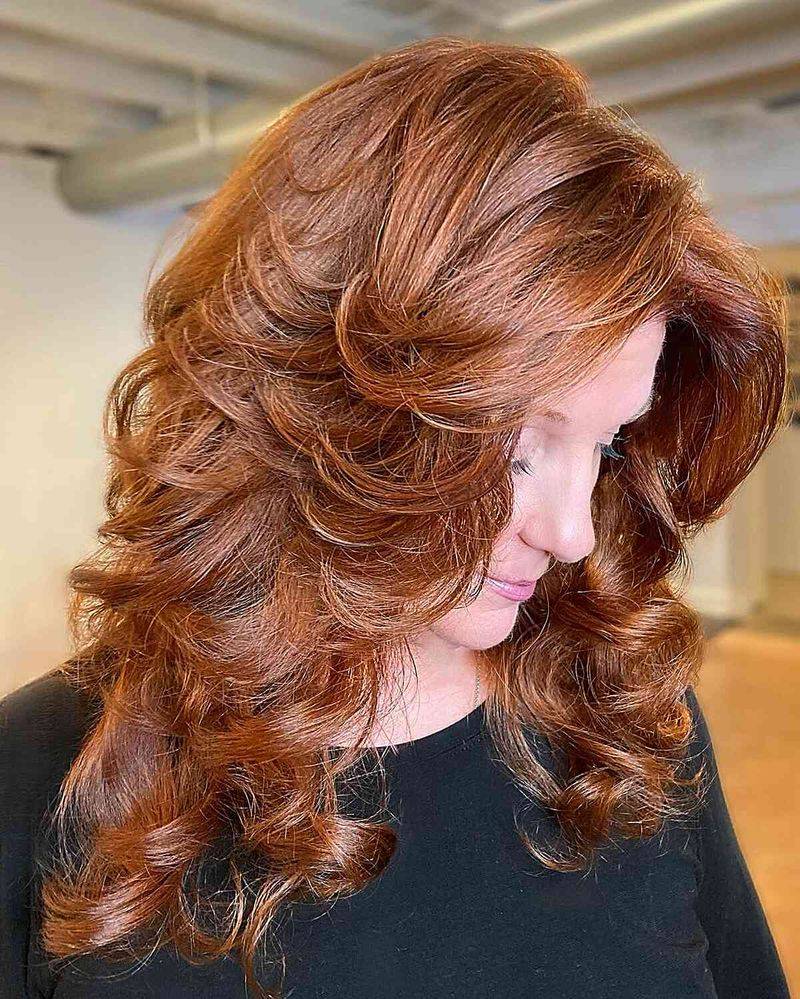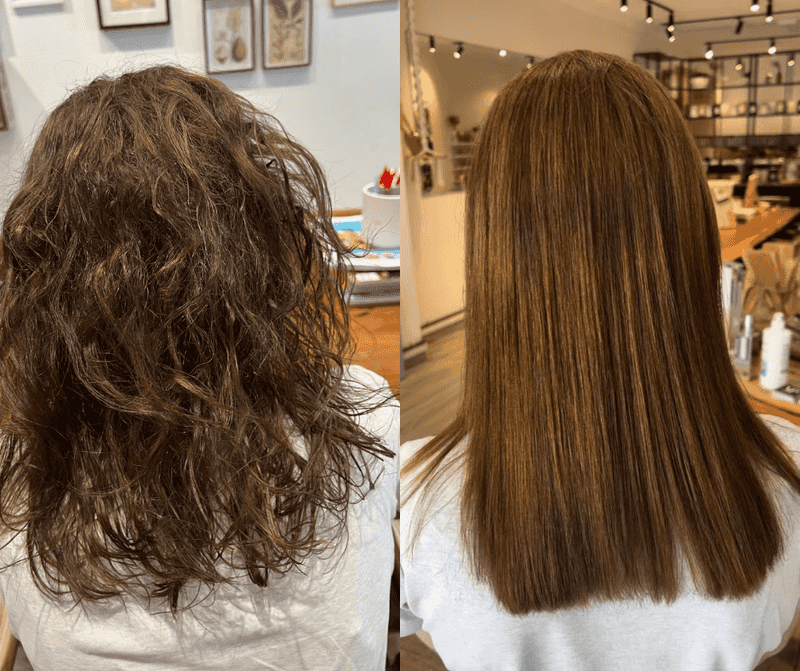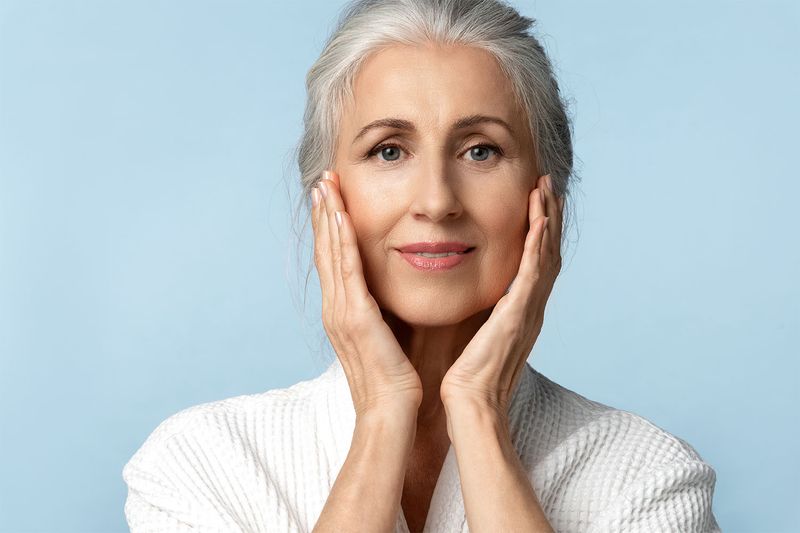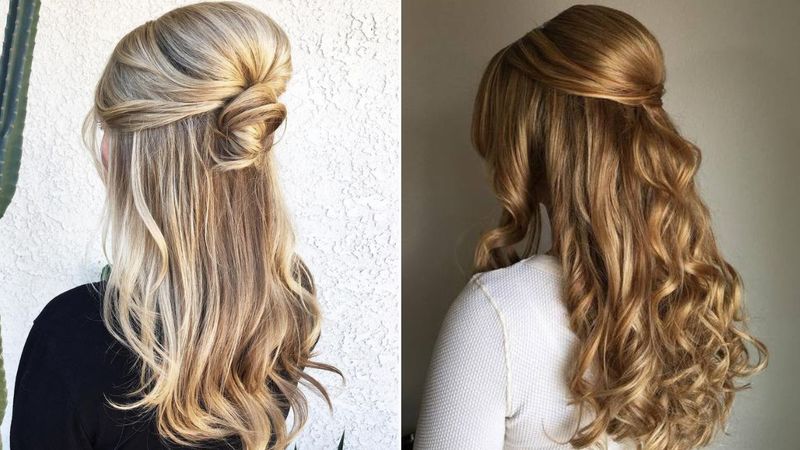Finding the right haircut when you’re over 60 with fine hair can be tricky. The wrong style can make your hair look flat or emphasize thinning areas.
Let’s explore which cuts to avoid and which ones won’t give your hair the fullness you want, so you can make better choices for your next salon visit.
1. One-Length Blunt Cuts
Heavy, straight-across cuts weigh down already fine hair, making it appear even flatter at the roots.
The lack of layers or movement means your fine strands have nothing to create the illusion of volume. Skip this severe style that only works for those with naturally thick locks.
Related: -14 Empowering Pixie Styles for Women Over 40 Who Own Their Look
2. Super Long Styles
Gravity pulls down fine hair that extends past the shoulders, creating a stringy, dragged-down appearance.
Excess length stretches fine hair to its breaking point, literally! The weight of long locks draws oils from your scalp faster, making hair look greasy and limp sooner.
3. Severe Pixie Cuts
Extremely short pixies with minimal texture expose the scalp too much when hair is fine.
Without some length on top to manipulate, these ultra-short cuts can emphasize thinning areas rather than disguise them. They leave little room for styling to create the appearance of volume.
4. Flequillo fuerte
Thick, straight-across bangs require considerable hair to create, stealing precious volume from the rest of your style.
Bangs that are too dense pull oils from your forehead, making them separate and look sparse by midday. They draw attention to forehead lines rather than complementing your features.
5. Slicked-Back Styles
Pulling fine hair tightly back exposes every thin patch and offers zero volume at the crown.
These severe styles highlight receding hairlines and thinning temples – precisely the areas most women over 60 want to downplay. The tension can also damage fragile hair follicles.
6. Razor-Cut Ends
Razor cutting thins out hair ends, which is the last thing fine hair needs!
This technique removes bulk and creates wispy, sometimes frizzy ends that emphasize how little hair you have. For women over 60, it makes already-fine hair look damaged and brittle.
7. Center Parts
Splitting fine hair directly down the middle exposes the scalp along the part line, where thinning is often most noticeable.
Center parts distribute hair evenly on both sides, preventing you from creating the illusion of volume. They tend to emphasize facial asymmetries that come with aging.
8. Perfectly Symmetrical Bobs
Those precise, geometric bobs that hit at exactly the same length all around lack the movement fine hair needs.
The rigidity of these cuts creates a helmet-like effect that emphasizes thinness rather than disguising it. Without built-in texture, fine hair lies flat against the head.
9. Shaggy Mullet-Inspired Cuts
Trendy shags with disconnected layers create gaps in fine hair that make it look patchy rather than full.
The dramatic difference between short top layers and longer back sections emphasizes how little hair you actually have. These cuts require significant density to look intentional, not sparse.
10. Blunt Lobs With No Layers
Long bobs without internal layers create a heavy curtain effect that drags down fine hair.
The single-length perimeter offers no built-in volume and tends to accentuate neck wrinkles. Without strategic cutting, these styles hang limply, especially by day’s end when natural oils accumulate.
11. Undercuts
Removing hair underneath might seem smart for fine hair, but it actually eliminates valuable density you need.
Undercuts leave you with even less hair to work with when creating styles. For women over 60, this trendy technique removes what little fullness you naturally have.
12. Wet-Look Styling
Slicking hair down with products that create a wet appearance flattens fine strands completely.
This trendy finish makes hair stick to the scalp, highlighting every thin spot. The heavy products required weigh down already-delicate strands, making them look stringy rather than sleek.
13. Blunt-Cut Bobs With Heavy Ends
Straight-edge bobs create a bottom-heavy effect, drawing eyes downward away from any volume at the crown.
The weight concentration at the ends pulls fine hair down, creating a triangular shape that widens at the bottom. This unflattering silhouette emphasizes thinness at the roots.
14. Overly Thinned-Out Layers
Excessive thinning shears on fine hair remove precious density you can’t afford to lose.
Hairstylists sometimes over-texture fine hair, creating see-through layers that expose the scalp. This misguided technique leaves hair looking stringy rather than light and bouncy.
15. Ultra-Feathered Cuts
Those heavily feathered, 70s-inspired cuts create skinny strands that separate and expose the scalp.
The wispy ends of ultra-feathered styles emphasize how fine your hair actually is. For women over 60, this technique can make hair look dated and damaged rather than soft.
16. Straight Perms
Chemical straightening removes natural wave patterns that give fine hair built-in volume.
The harsh chemicals in straightening treatments damage fine hair’s protein structure, making it even more fragile. After the initial smoothness wears off, you’re left with flatter, more damaged strands.
17. Slick Ponytails
Pulling fine hair back tightly not only looks sparse but causes tension that can lead to traction alopecia.
Ponytails highlight thinning at the temples and crown. The smooth, pulled-back style offers no disguise for areas where hair is naturally less dense as we age.
18. Half-Up Styles With No Volume
Securing the top section of fine hair back without adding volume creates an unflattering, flattened crown.
These half-up styles expose how thin your hair is at the part and temples. Without proper teasing or volumizing products, they emphasize rather than minimize thinning areas.

